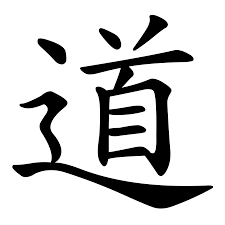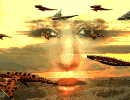Tao: The Way

Legend has it that Taoism (pronounced Daoism) was first developed by Lao Tsu (pronounced Lao Zi) around 500BC in China predating the rise of Confucianism.
The truth is that he recorded an oral history of philosophical thought that had existed for thousands of years and added some of his own thoughts. His main body of work is known as the Tao Te Ching (pronounced Dao De Jing) or the ‘Classic Book of the Way of Integral Virtue’.
Trying to explain The Tao with words is a fruitless exercise that Lao Tsu attempted and appears to have achieved a reasonable success. The Tao Te Ching has been translated into many languages and printed almost as many copies as the Christian Bible. From its 81 stanzas has grown one of the world’s biggest religious followings.
However, it is not a religion and does not promote the worship of a deity. The Tao Te Ching recognises an all pervading energy that inhabits and expresses itself in all things in the universe without limit. The purpose of learning in the Taoist way is to live in harmony with the natural laws and way of the Tao.
Stanza 1 reads:
“The DAO that can be expressed is not the eternal DAO.
The name that can be named is not the eternal name.
‘Non-existence’ I call the beginning of Heaven and Earth.
‘Existence’ I call the mother of individual beings.
Therefore does the direction towards non-existence lead to the sight of the miraculous existence, the direction towards existence to the sight of spatial limitations.
Both are one in origin and different only in name.
In its unity it is called the secret.
The secret’s still deeper secret is the gateway through which all miracles emerge.”
This is the essence at the heart of Taoist teaching.
In the Richard Wilhelm interpretation of stanza 32, he says that:
“Dao as the eternal is unutterable simplicity”
In stanza 41, he has translated the original to read:
“If a sage of the highest order hears about Dao, he is keen to act in accordance with it.
If a sage of the middle order hears about Dao, he half believes and half doubts.
If a sage of the lower order hears about Dao, he laughs loudly about it.
If he does not laugh loudly then it was not yet the true Dao.”
At the centre of the Taoist belief is the recognition that the Tao is the source of all life. In stanza 42, Wilhelm records:
“Dao generates the One,
The One generates the Two,
The Two generates the Three,
The Three generates all things,
All things have darkness at their back and strive towards the light,
and the flowing power gives them harmony.”
The symbol that represents this harmony is the ‘Yin-Yang Symbol’.

All things manifested in the physical world are as a result of two opposing forces operating in harmony. Being conscious of and understanding those forces helps us to understand life.
In addition, we also need to remember that:
“All things return to the Three,
Three return to the Two,
Two returns to the One,
And the One returns to the Tao.
At the point of maximum light signals the return of darkness.”
The Gold Dragon is the symbol of that which exists but does not exist and so holds the key to this understanding.
The Chin Lung Tao (Jinlong Dao) or Way of the Gold Dragon is my understanding of what I have learned.




